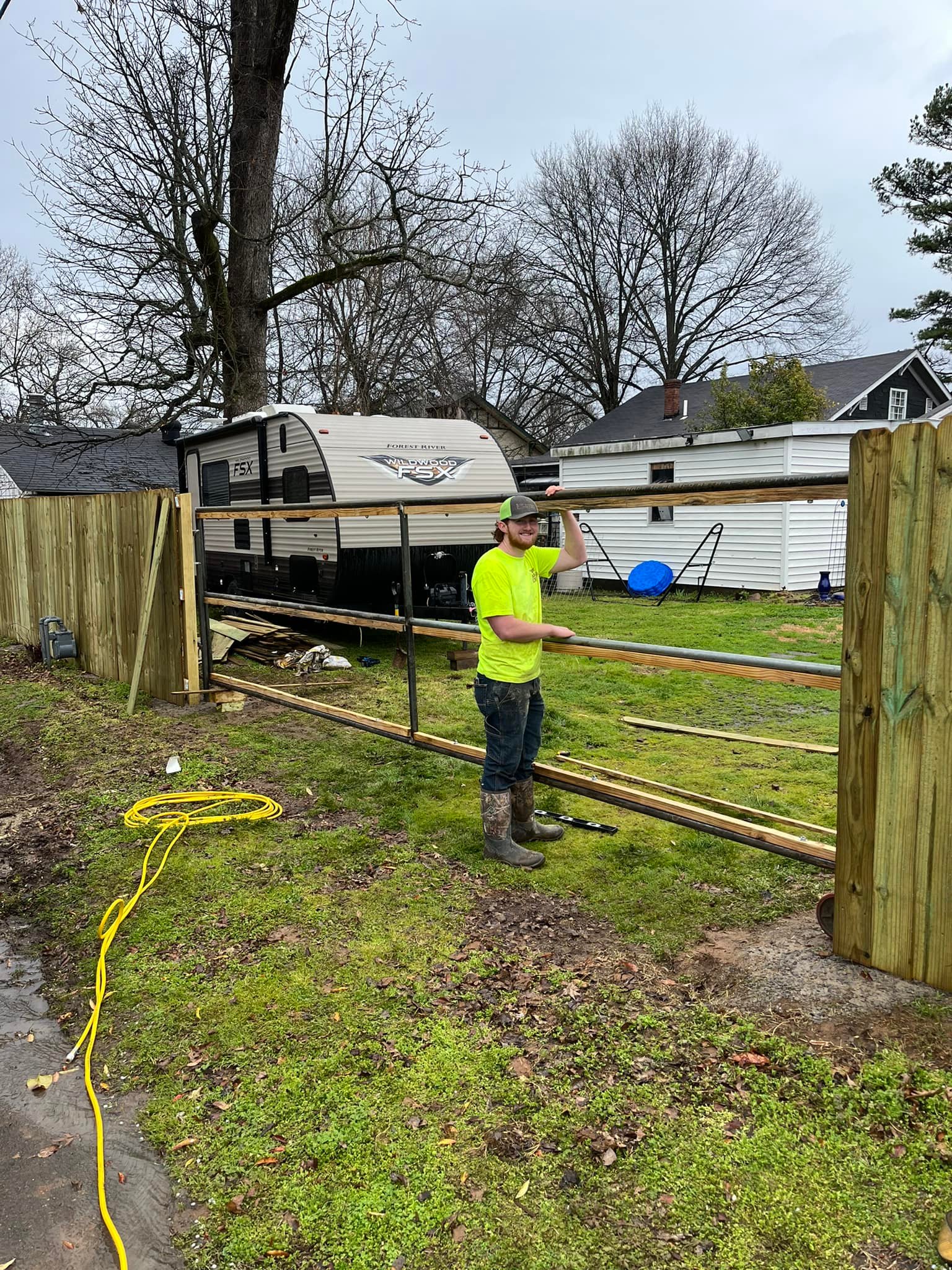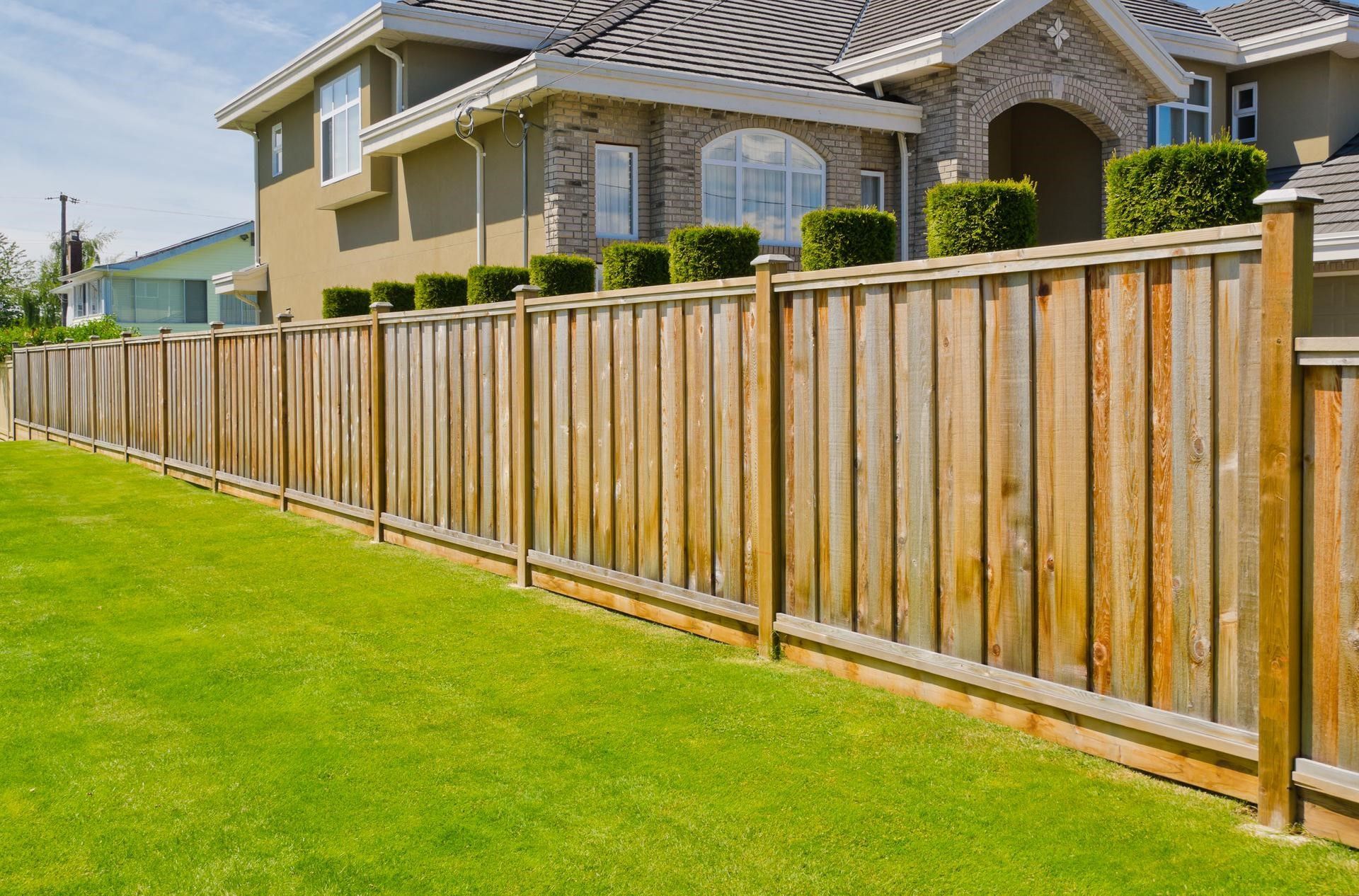Experienced Wood Fence Contractors Fort Smith AR: Creating Stylish and Functional Fences
Experienced Wood Fence Contractors Fort Smith AR: Creating Stylish and Functional Fences
Blog Article
Step-by-Step Guide to Mounting a Wood Fencing for Your Home or Property
Mounting a wood fencing can dramatically enhance both the performance and visual appeal of your residential or commercial property. Understanding these steps not only makes sure a sturdy installation but additionally adds to long-term contentment.
Preparation Your Fencing Installment
When beginning on the setup of a timber fencing, cautious planning is necessary to make sure an effective end result. Begin by analyzing the function of the fencing-- whether it is for privacy, security, or appearances-- considering that this will certainly affect the layout and format. Next off, assess the property lines, taking treatment to verify the limits via a study or title deed to stay clear of disputes with neighbors.
Take into consideration regional zoning regulations and homeowners' organization standards, as these may dictate fencing height, layout, and products. It is advisable to obtain the required permits prior to beginning work, as this can protect against lawful complications later on.
Furthermore, think about the surface and soil conditions of your home. Uneven ground might call for added modifications throughout installation, while rocky dirt might necessitate specific devices.
Last but not least, produce an in-depth plan that includes measurements, the variety of messages, and the spacing between them. A clear design will help with the setup procedure and guarantee that you have all called for products available. By sticking to these preparation actions, you can set a strong structure for an effective wood fence installation.
Choosing the Right Materials
Picking the ideal products for your wood fencing is important to guaranteeing resilience and visual charm. The most typical sorts of wood made use of for fence include cedar, redwood, and pressure-treated yearn. Cedar and redwood are normally resistant to decay and pests, making them excellent selections for long life. Their abundant colors and natural grain patterns also improve the visual appeal of your residential property.
Pressure-treated yearn is an additional popular choice, as it is frequently a lot more cost effective. It calls for routine maintenance and treatment to lengthen its life-span. When picking timber, think about the climate of your region; as an example, locations with high humidity may profit from wood varieties with greater resistance to wetness.
A picket fencing might call for different material specs compared to a privacy fencing. By very carefully selecting your products, you can make sure that your wood fence will stand the test of time while enhancing your home's landscape.
Preparing the Setup Site

Preparing the installment site is a vital action in making sure the effective building of your timber fencing. Correct prep work not only facilitates a smoother installation procedure yet also adds to the durability and stability of the fencing.

If your website has uneven ground, think about leveling it or adjusting your fencing layout appropriately. This is necessary to avoid damage during installation and make sure safety.
Mounting the Fencing Articles

Following, dig openings for each and every message, ensuring they are deep sufficient-- usually one-third the height of the article over ground-- to offer security. A depth of at the very least 2 feet is recommended for the majority of fencings. The size of the openings must be about three times the size of the articles.
Once your holes are ready, area each article upright right into the designated opening. Use a level to ensure they are plumb, adjusting as required. After placing, fill the holes with concrete mix or packed dirt for added support. Enable the concrete to cure as per the supplier's directions, normally 24 to 48 hours. Correctly mounted blog posts are important for maintaining the architectural integrity of the fence, ensuring it stays upright and browse around this site protected versus environmental anxieties.

Adding Fence Panels and Completing Touches
When the fencing articles are firmly set, the following step entails affixing the fence panels, which will certainly define the boundaries of your property. Begin by placing each panel between the blog posts, ensuring they are level and lined up.
After all panels are attached, examine the entire fence for any kind of imbalances or voids. Make adjustments as necessary to ensure a consistent appearance.
Additionally, using Look At This a protective sealant or stain will certainly enhance the timber's sturdiness versus climate elements, extending the life of your fencing. With these actions, your timber fencing will not only offer its purpose successfully yet additionally boost the general appeal of your residential or commercial property.
Verdict
Finally, the successful setup of a wood fencing requires cautious planning, option of suitable products, detailed site prep work, and exact execution of installment techniques. Focus to information during each phase makes sure structural integrity and aesthetic allure. By sticking to the detailed actions, homeowner can improve personal privacy, curb, and security allure, eventually adding to the general value and performance of the property. Proper upkeep post-installation even more prolongs the life and appearance of the wood fencing.
When beginning on the installation of a timber fence, careful preparation is crucial to make certain an effective outcome.Picking the suitable materials for your timber fence is critical to guaranteeing sturdiness and aesthetic charm. A picket fencing might call for different product specifications contrasted to a personal privacy fencing.With the installation website properly prepared, the following action involves setting the fence blog posts, which offer as the backbone of your timber fence.When the fence posts are safely established, the next action my company includes attaching the fence panels, which will certainly define the borders of your residential property.
Report this page